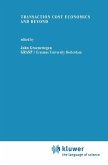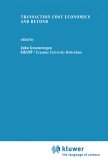The study of bureaucracy must include certain key questions: what are bureaucrats and bureaucracies; why do they exist and what are their functions; how do they behave; how much power do they possess; what is their impact on efficiency and production; and how do they affect society?
This book contains analyses of all these issues, done by a variety of economists of differing backgrounds, approaches and opinions, broadly categorized under the labels Neoclassical, Institutionalist, and Marxist, although there are overlaps and correspondences that cross ideological and/or paradigmal boundaries.
In this book the labels are employed as a guide to the reader with a preference for one approach over the others, and as an indication of how chapters in different sections are related in their approaches.
Hinweis: Dieser Artikel kann nur an eine deutsche Lieferadresse ausgeliefert werden.
This book contains analyses of all these issues, done by a variety of economists of differing backgrounds, approaches and opinions, broadly categorized under the labels Neoclassical, Institutionalist, and Marxist, although there are overlaps and correspondences that cross ideological and/or paradigmal boundaries.
In this book the labels are employed as a guide to the reader with a preference for one approach over the others, and as an indication of how chapters in different sections are related in their approaches.
Hinweis: Dieser Artikel kann nur an eine deutsche Lieferadresse ausgeliefert werden.
`... this is really an interesting and worthwhile reading book ... and I can only recommend it to every reader who wants to know something about bureaucracy.'
Journal of Institutional and Theoretical Economics, 152:3 (1996)
Journal of Institutional and Theoretical Economics, 152:3 (1996)
`... this is really an interesting and worthwhile reading book ... and I can only recommend it to every reader who wants to know something about bureaucracy.'
Journal of Institutional and Theoretical Economics, 152:3 (1996)
Journal of Institutional and Theoretical Economics, 152:3 (1996)








